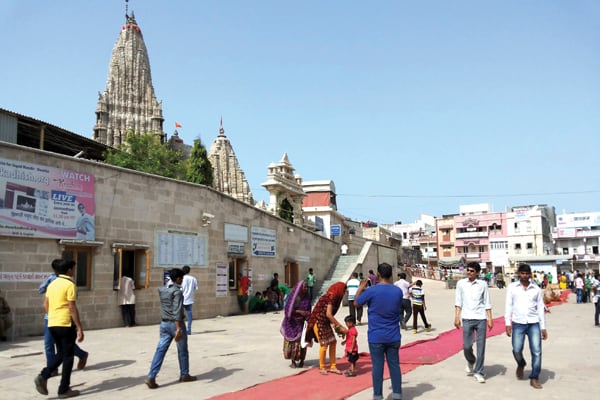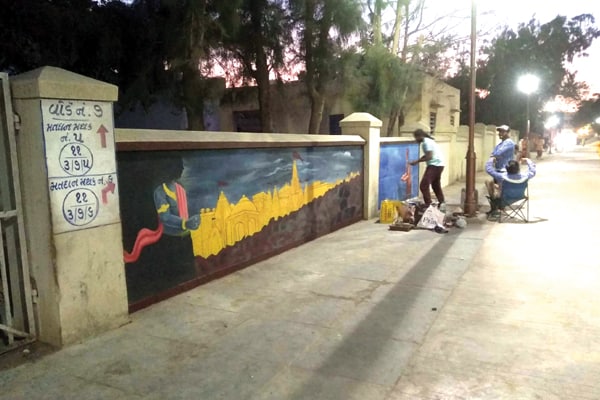
Urban heritage conservation presents unique challenges, especially in the Indian context. Many of our heritage assets are living structures, deeply entwined in the lives, rituals, livelihoods and aspirations of millions of residents and visitors alike. The Dwarkadhish Temple in Dwarka, Gujarat, derives its value from the deep sacred bond that devotees all over the world have with it apart from being a historical architectural marvel of its time, write Manvita Baradi, Director, Urban Management Centre; Anurag Anthony, Chief Technical Officer, Urban Management Centre; and Kaninik Baradi, Strategic Initiatives Officer, Urban Management Centre.
Urban heritage conservation is a balancing act between preservation and development for its diverse stakeholders. Growth, urbanisation and evolving needs of their users are to be perceived as a threat and yet, without these pressures, the structures would languish in disrepair and ignobility. In many parts of the world, local governments serve as anchors for heritage management and this role has been evolving in India as well.
The Sustainable Development Goal (SDG) 11.4 – ‘strengthen efforts to protect and safeguard the world’s cultural and heritage’ – highlights the importance of sustainable measures to protect and safeguard cultural and heritage assets. Heritage City Development and Augmentation Yojana (HRIDAY), a central sector scheme of the Government of India was launched in June 2015 by the Ministry of Housing and Urban Affairs (MoHUA) for 12 heritage cities in India, including Dwarka, Gujarat. The HRIDAY Mission appointed Urban Management Centre to conceptualise, plan, design and handhold Dwarka Municipality to execute heritage and civic development works worth Rs 28 crore in and around the heritage assets of Dwarka.

Although designed with a noble mission, HRIDAY faced several challenges in its sustainability. Some of which includes:
Disproportionate assets transferred to the municipality

At present, the Dwarka Municipality does not have the financial capacity to operate and maintain the assets. Their annual budget was around Rs 31.59 crore or Rs 7,890 per capita in the year 2015-16. The per capita budget for the resident population is comparable to Ahmedabad at around Rs 7,500 per capita. However, with a floating population 100 times the resident population in Dwarka, their budget seems dwarfed. Upon completion of the New Gomti Ghat and Samudra Narayan Beachfront Development in 2015, the Dwarka Municipality incurred Rs 6 lakh energy bill in its first month. The civic body could not afford such expense and hence switched off the lights thereafter. If operated regularly, only the street lighting bill for these projects would cost the municipality nearly 13 per cent of their own income. Repair, maintenance and housekeeping costs of all the assets worth Rs 120 crore would be at least Rs 6 crore or 2/3rd of the annual income of the civic body.

Vegetable market, Dwarka
No sustainable financing of O&M expenses
The Municipality’s annual income from their own sources (tax and non-tax based) is less than 30 per cent of their total budget while the rest comprises state government grants. With such high dependency on the state government grants, sustainable operations and management of civic and developmental projects is questionable. As per the Service Level Benchmarks (SLB), 2016 for water and sanitation, the cost recovery in solid waste management was only nine per cent.
Also Read: Strengthening Cultural & Heritage Management Planning in Urban Spaces
Lack of municipal technical capacity
A staffing assessment reveals that the Dwarka Municipality is working with just half of the sanctioned posts. With the restriction on fresh recruitments imposed by the state government and poor financial health for outsourcing, the civic body finds it challenging to hire facilities management agencies for operations and management of the projects.

HRIDAY street art, Dwarka
Lack of political will to charge for services
The municipality faces constant opposition from their elected officials against levying of user charges for facilities, including the Sudama Setu, a footbridge across the Gomti River built on public-private partnership (PPP). The lack of political will towards sustainable operations and management is adding to the neglect of these assets.
With these challenges, the recently created assets by the HRIDAY Mission face a grim future with only 20 per cent of the operations and management requirements being fulfilled of the revenue sources generated by the HRIDAY projects.
To strengthen the sustainability of operations and management, we recommend the following: Revenue enhancement: The Dwarka Municipality must rationalise their taxes, tariffs, rentals and user charges on its services to improve the cost recovery. In addition, it should create an inventory and monetise its assets including land holdings, vending spaces, advertising spaces, parking and introduce a development fee on the hospitality services including transport, hotels and restaurants. Dwarka Municipality operates a ‘Dwarka/ Bet Dwarka Darshan Bus Service’ successfully and claims it to be sustainable, if not profitable.

HRIDAY street paving work, Dwarka
Lessons from such examples may be adopted in other paid services to improve its financial sustainability. The Dwarka Municipality could also levy entry fees for vehicles, similar to the environmental/tourism/pollution fee charged by places like Mount Abu, Mahabaleshwar and Matheran.
Establish SPVs for special projects:
The local administration could set up a special purpose vehicle (SPV) for operations and management of HRIDAY and other recently completed projects in Dwarka. The SPV should be empowered to collect user charges/ fees from the visitors to avail the services provided by these projects.
Revolving fund:
The MoHUA may also create a revolving fund to enable borrowing by HRIDAY cities for hosting special events/festivals/fairs which may generate additional income for the municipalities. The borrowing may be supported/supplemented by respective state tourism departments.
Also Read: India’s Urban Heritage Management Conundrum The Need for Transformative Reforms
Convergence with tourism and transport departments:
The Tourism Department of Gujarat may contribute a share of the revenue towards the operation and management of assets proportionate to the visitors to tourist destinations such as Dwarka. Likewise, the Gujarat State Road Transportation Corporation (GSRTC) may also contribute a share of their revenue from the bus fares to and from Dwarka for local development.

HRIDAY street paving work, Dwarka
Enhancing urban heritage management capacity:
The local administration must build the capacity of their staff in urban heritage management. At present, continued learning options in heritage management are limited to conventional master’s degrees in conservation. The Urban College offers a course in heritage management focusing on the local government’s needs to address these specific challenges.
Dwarka Municipality must conduct a detailed feasibility study to assess the enforceability and fix taxes, tariffs, fees and charges for each of the above recommendations. Structural reforms like these may help to protect and safeguard the world’s culture and heritage in alignment with SDG 11.4.
Be a part of Elets Collaborative Initiatives. Join Us for Upcoming Events and explore business opportunities. Like us on Facebook , connect with us on LinkedIn and follow us on Twitter, Instagram.











